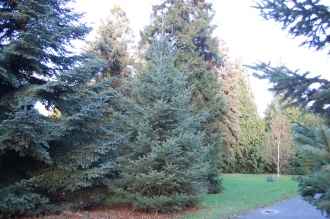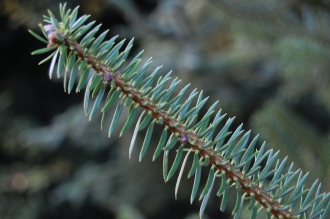Position: Full sun to shade
Flowering period: Spring
Soil: Moist, well drained
Eventual Height: 35m
Eventual Spread: 10m
Hardiness: 5a, 5b, 6a, 6b, 7a, 7b, 8a, 8b, 9a
Family: Pinaceae
Abies cephalonica is an evergreen coniferous tree with a narrowly conical habit. Its dark green leaves are needle like, flattened with a pointed tip, up to 3cm long and 2mm broad. Its trunk may achieve a diameter of up to 1m. Its grey/ light brown bark is smooth, becoming shallowly fissured with age. Its flowers are pale yellow pollen cones. Its fruit are erect cones, up to 20cm long and 4cm broad, dark purple when young, maturing to brown.
Abies cephalonica, commonly known as the Greek Fir, is native to the mountains of Greece. In its native habitat it grows at an altitude between 900m – 1700m on mountains with a relatively high rainfall.
The etymological root of the binomial name Abies is derived from the ancient Latin name for the Fir tree. Cephalonica means ‘from Kefallonia’.
The landscape architect may find Abies cephalonica useful as an attractive ornamental evergreen tree. Attention should be taken to its location, early morning sun and frost pockets should be avoided as this species comes into leaf early and may be damaged by frost.
Ecologically, Abies cephalonica seeds are attractive to some birds.
Abies cephalonica prefers moist, fertile, well-drained soils. It will tolerate most pH of soil, including very alkali.







Leave a comment